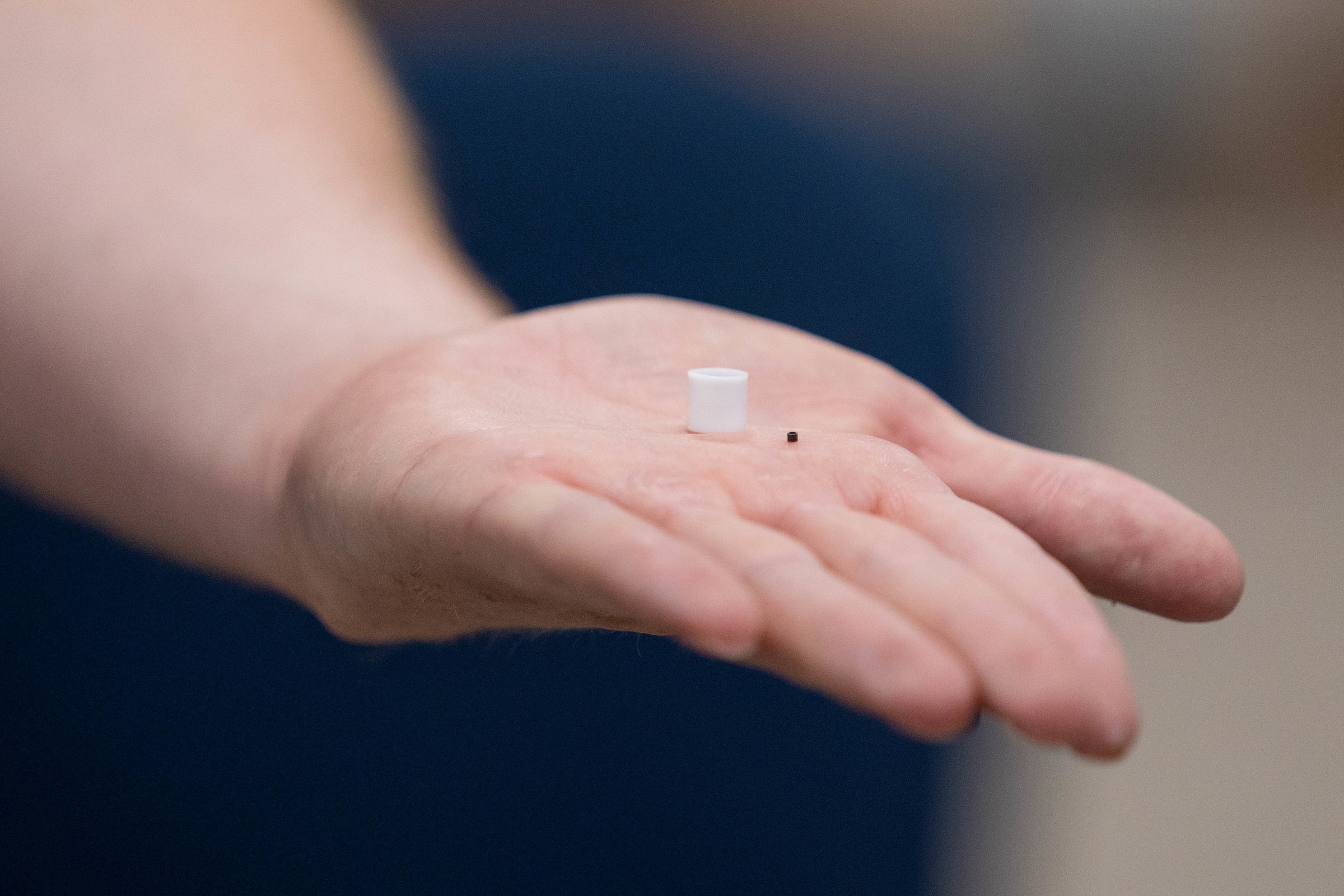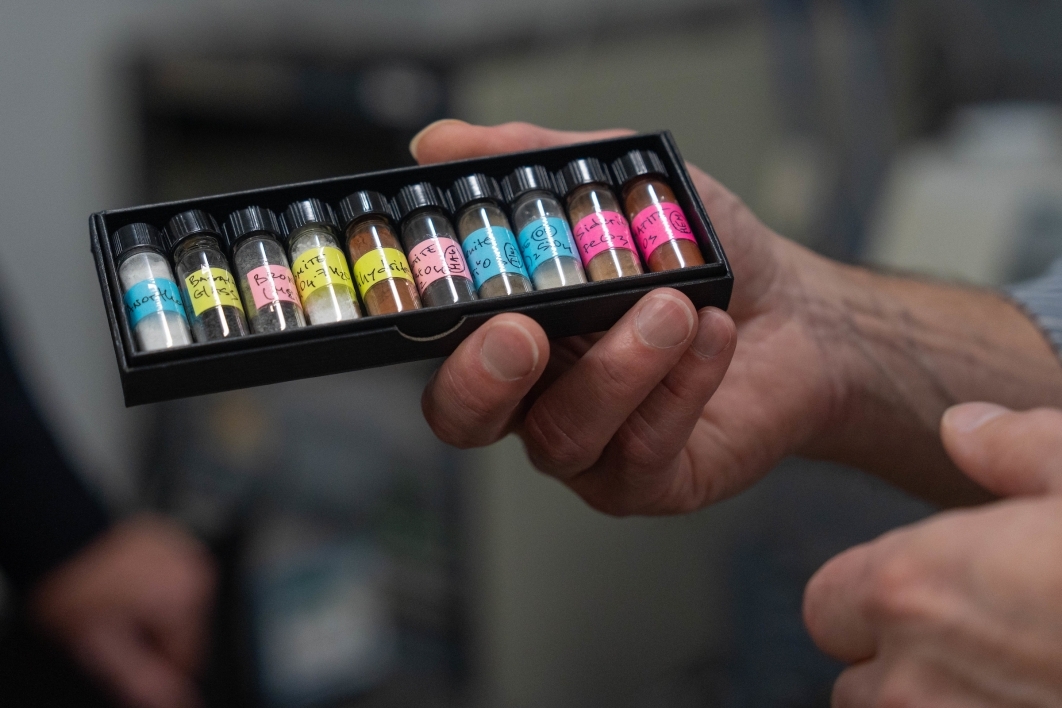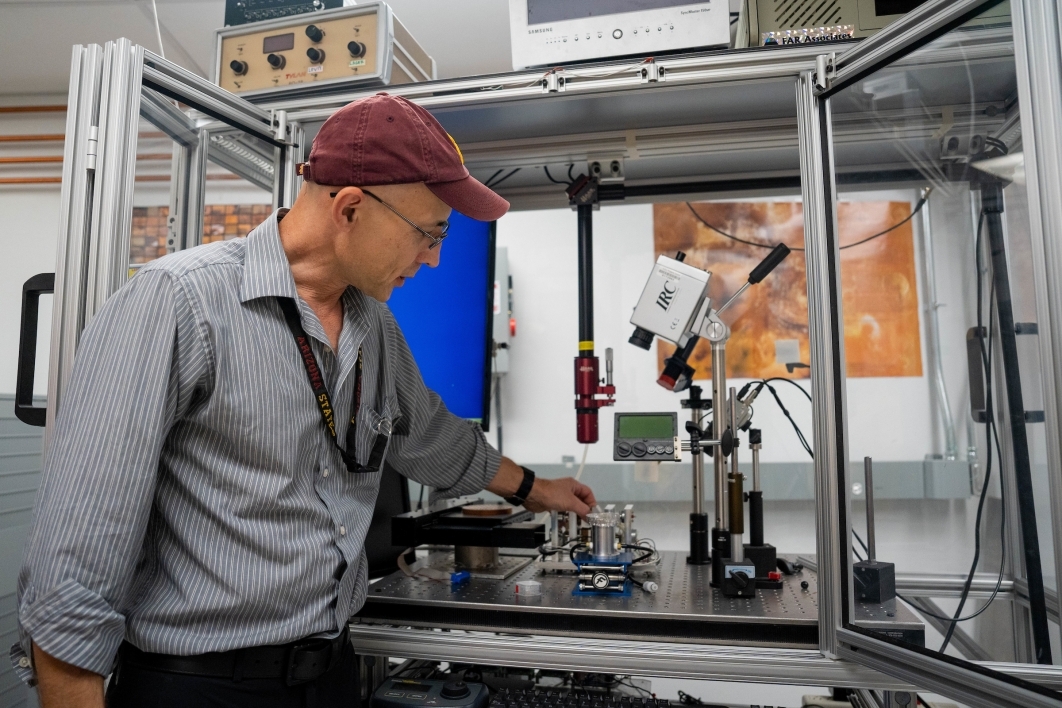Materials matter
ASU celebrates opening of Navrotsky Eyring Center for Materials of the Universe with presentations, lab tour

In the world of Alexandra Navrotsky, it’s all about materials.
Materials both seen and invisible to the naked eye. Materials on the Earth’s surface and deep within its mantle. Materials mined from the moon and from other planets in the solar system. Even materials from galaxies far beyond our own.
The study of materials continues to change lives — from making cars more efficient, to reducing the greenhouse effect, to allowing rockets to soar in a safer way. And maybe one day, it will help us find another planet to inhabit.
Ongoing materials research is essential for advancing technology.
This is what excites Navrotsky, a professor in Arizona State University's School of Molecular Sciences and School for Engineering of Matter, Transport and Energy. So much so that she leads the Navrotsky Eyring Center for Materials of the Universe and has invested $10 million to support the future of materials science at ASU.
On Tuesday, Sept. 13, the center had its pandemic-delayed grand opening, with deans, colleagues and students from a range of disciplines gathered on the Tempe campus to mark the occasion. The event featured an overview of the center's achievements and plans, tours of lab spaces where work is being conducted, and lectures on a range of topics by researchersHongwu Xu is a professor in the School of Molecular Sciences; Qi-Jun Hong, assistant professor of materials science and engineering in the School for Engineering of Matter, Transport and Energy; Jie Xu, associate professor at the School of Molecular Sciences; Dan Shim, professor at School of Earth and Space Exploration; and Candace K. Chan, associate professor in the School for Engineering of Matter, Transport and Energy Hongwu Xu, Qijun Hong, Jie Xu, Dan Shim and Candace Chan, among other speakers. Shim and Chan are the first-ever Navrotsky Professors of Materials Research, and Hongwu Xu and Jie Xu (not related) are newly hired for the Center for the Materials of the Universe.
It was a chance for event goers to learn more about the center and peek inside its work.
How it began
In 1969, ASU hired Navrotsky at a time when it was difficult for women working in the sciences to get faculty positions. After ASU, she worked at Princeton University and the University of California, Davis. Over time, she was recognized as a world-renowned geochemist and received countless honors, medals and awards, including the prestigious V.M. Goldschmidt Award.
But in the end, Navrotsky wanted to come back to ASU, a place she calls home. With her return in 2019 came some soul-searching.
“I asked myself a question,” Navrotsky said Tuesday as she kicked off the celebration. “What can ASU do now that would be as exciting as those early days?”
The answer to that question became the Navrotsky Eyring Center for Materials of the Universe.
And what does “materials of the universe” mean? Everything, Navrotsky said.
“It's an all-encompassing term, but really in a way, the Center for Materials of the Universe effectively has several parts to it,” she said.
“The idea of materials of the universe is that there's a natural confluence of materials science and geological and planetary science. Planets, after all, are made of materials. So in order to understand the variety of planets that one has in the universe, one has to have a great knowledge of the materials that they might be made of.
“... So setting up an interdisciplinary collaboration, the strength of this materials problem and its application to planets, was one of the goals of of MotU, Materials of the Universe. The second goal of course, is you need better material. If you're going to do space exploration, you need to go to space. You need to have resources. You need to build things in space. ... So basically MotU explores this commonality between materials science and earth and space science.”
Collaboration has been key for the center, Navrotsky said, and it will continue to be so.
“We want to be inclusive, not exclusive.”
Alexandra Navrotsky, director of the Navrotsky Eyring Center for Materials of the Universe, speaks during the center's grand opening celebration on Sept. 13. Photo by Samantha Chow/ASU
Present successes and future plans
The celebration included a showcase of some of the center’s successes since its opening, as well as future plans. Among those speaking was Qijun Hong, assistant professor in the School for Engineering of Matter, Transport and Energy.
Hong talked about his database and models for melting-temperature prediction, which are the culmination of 10 years of research. The models allow scientists to rapidly screen, design and discover new materials that will survive extremely high temperatures and high-pressure conditions, with such applications as protective barriers for gas turbines and heat shields on aircrafts. The future of his work will focus on creating a model that can determine the physical properties of any combination of elements in just three seconds.
The center has also received funds from the National Science Foundation for a new lab that is “unlike any in the Western Hemisphere,” said Kurt Leinenweber, associate research professional in the School of Molecular Sciences.
The lab, called FORCE — Facility for Open Research in a Compressed Environment — will be a one-of-a-kind, high-pressure facility where researchers can observe the impact of extreme pressures and discover new materials. Expected to draw scientists from around the world, the facility is scheduled to be completed by 2023 thanks to a $13.7 million grant from the National Science Foundation.
After the morning presentations at the Biodesign Auditorium, attendees had the opportunity to tour the center’s lab facilities, and the celebration wrapped up with a reception at ASU’s ISTB4 building featuring university leaders including Chief Science and Technology Officer Neal Woodbury and Sally C. Morton, executive vice president of Knowledge Enterprise. President Michael M. Crow, who spoke via video, praised the work being done at the center.
“I think the exciting thing here is that Alex has brought together scientists and engineers and conceptualizers,'' Crow said. “And, in my mind … dreamers.”
He said that the work being done by the center is at the heart of where we are as a species.
“We've gotten to this point where our understanding of the universe, our understanding of the chemistry and of the physics, our understanding of the matter-energy relationships are such that we're just leaping ahead in gaining a fundamental understanding of who we are, where we are, why we're here, how things work now and how they will work in the future.”
Top photo: Pieces of cubic boron nitride, the world’s second-hardest material, sit on a table at the Physical Sciences Building B on the Tempe campus during a lab tour, part of the Sept. 13 grand opening celebration of ASU’s Center for Materials of the Universe. Photo by Samantha Chow/Arizona State University
More Science and technology

ASU author puts the fun in preparing for the apocalypse
The idea of an apocalypse was once only the stuff of science fiction — like in “Dawn of the Dead” or “I Am Legend.” However these days, amid escalating global conflicts and the prospect of a nuclear…

Meet student researchers solving real-world challenges
Developing sustainable solar energy solutions, deploying fungi to support soils affected by wildfire, making space education more accessible and using machine learning for semiconductor material…

Miss Arizona, computer science major wants to inspire children to combine code and creativity
Editor’s note: This story is part of a series of profiles of notable spring 2024 graduates. “It’s bittersweet.” That’s how Tiffany Ticlo describes reaching this milestone. In May, she will graduate…



